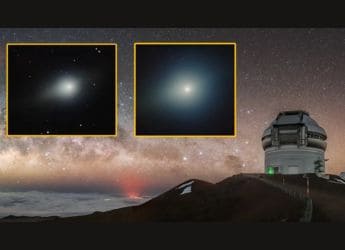- Home
- Science
- Science News
- NASA Exercise Finds That No Tech Is Available to Stop an Asteroid’s Collision With Earth
NASA Exercise Finds That No Tech Is Available to Stop an Asteroid’s Collision With Earth
The simulation showed scientists would take over 6 months to try and deflect an incoming asteroid.

Photo Credit: Pixabay/ MasterTux
Use of a nuclear explosive device to disrupt the asteroid could reduce the risk of damage
NASA and its peers around the world conducted a “table-top” exercise last month to determine the time scientists will take to understand and find ways to prevent a catastrophic collision of an incoming asteroid into the Earth. The simulation was hypothetical and intended to allow scientists time to prepare for such situations if that were to arise. They set the scenario: a mysterious asteroid from about 35 million miles (56.3 million kilometres) away is coming towards Earth and is expected to hit the planet in six months. Scientists sat down for a week starting April 26 to plan ways to stop or change the direction of the hypothetical asteroid, named 2021 PDC.
The participants were given information about the asteroid every day, which represented a month in the exercise timeline. The asteroid was determined to be anywhere between 35m and 700m in size. With each passing hour, the scientists began developing information.
Finally, on Day 2, they confirmed that the asteroid impact will happen in six months across a vast region, which includes Europe and Northern Africa. By the end of the week, they said with some degree of certainty that the asteroid would hit between Germany and the Czech Republic.
The scientists later concluded that currently there was no technology available to stop a massive asteroid from wiping out the world. For deflecting the asteroid, they added, more time than six months would be required.
The scientists said in a statement that if confronted with the hypothetical scenario in real life “we would not be able to launch any spacecraft on such short notice with current capabilities.”
They also said that use of a nuclear explosive device to disrupt the asteroid could reduce the risk of damage even in the absence of a clear understanding of asteroid properties. However, the ability of typical nuclear explosive devices to robustly disrupt near-Earth objects may not be adequate for larger asteroids.
Get your daily dose of tech news, reviews, and insights, in under 80 characters on Gadgets 360 Turbo. Connect with fellow tech lovers on our Forum. Follow us on X, Facebook, WhatsApp, Threads and Google News for instant updates. Catch all the action on our YouTube channel.
Related Stories
- Samsung Galaxy Unpacked 2025
- ChatGPT
- Redmi Note 14 Pro+
- iPhone 16
- Apple Vision Pro
- Oneplus 12
- OnePlus Nord CE 3 Lite 5G
- iPhone 13
- Xiaomi 14 Pro
- Oppo Find N3
- Tecno Spark Go (2023)
- Realme V30
- Best Phones Under 25000
- Samsung Galaxy S24 Series
- Cryptocurrency
- iQoo 12
- Samsung Galaxy S24 Ultra
- Giottus
- Samsung Galaxy Z Flip 5
- Apple 'Scary Fast'
- Housefull 5
- GoPro Hero 12 Black Review
- Invincible Season 2
- JioGlass
- HD Ready TV
- Laptop Under 50000
- Smartwatch Under 10000
- Latest Mobile Phones
- Compare Phones
- Redmi Note 15 5G
- Redmi Note 15 Pro 5G
- Redmi Note 15 Pro+ 5G
- Lava Play Max
- Poco C85 5G
- Honor Magic 8 Lite
- Jolla Phone
- Realme P4x 5G
- Asus ProArt P16
- MacBook Pro 14-inch (M5, 2025)
- OnePlus Pad Go 2
- Poco Pad M1
- Just Corseca Skywatch Pro
- Honor Watch X5
- Acerpure Nitro Z Series 100-inch QLED TV
- Samsung 43 Inch LED Ultra HD (4K) Smart TV (UA43UE81AFULXL)
- Asus ROG Ally
- Nintendo Switch Lite
- Haier 1.6 Ton 5 Star Inverter Split AC (HSU19G-MZAID5BN-INV)
- Haier 1.6 Ton 5 Star Inverter Split AC (HSU19G-MZAIM5BN-INV)

















